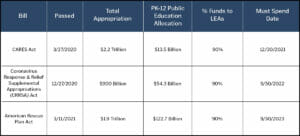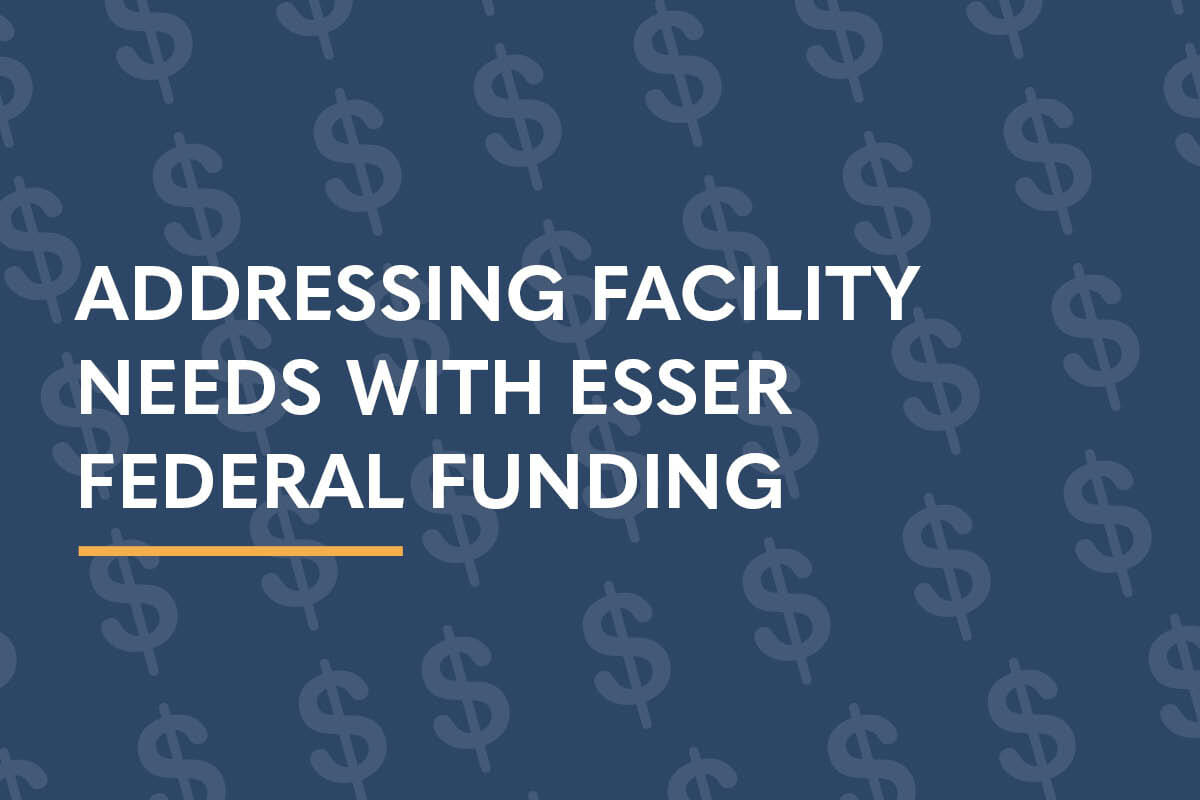The COVID-19 pandemic has taught us a big lesson – indoor air quality (IAQ) has a huge impact on keeping buildings, and those who use them, safe and healthy. This has put a bright spotlight on our country’s public schools, many of which are long overdue for an upgrade.
Thanks to President Biden’s American Rescue Plan, the federal government has appropriated over $100 billion to help schools address their immediate facilities’ needs as children transition back to in-person learning.
However, the rules and regulations for how these funds are to be used, especially the Elementary and Secondary School Emergency Relief (ESSER) funds, are not crystal clear.
Without clearer guidance from State Education Agencies (SEAs) and Local Education Agencies (LEAs), districts across the nation could be missing out on funding to support these critical upgrades.
So, what exactly can these funds be used for?
Ventilation Upgrades
The most immediate upgrades districts should use this funding for include improvements to their ventilation systems. It’s been proven that ventilation upgrades can significantly reduce the spread of COVID-19. Long-term benefits for these upgrades also include:
- Advancements in student learning and success, which decades of research suggest are directly linked to the improved health outcomes that building performance upgrades can provide.
- Reductions in energy usage resulting in significant continuous budget savings.
- Reductions in buildings’ operational greenhouse gas (GHG) emissions.
Construction Improvements
As stipulated by congress, the legislation designates several areas of construction where deployment of ESSER funds is allowed.
In subtitle A, Part 1. Section 2001 of the American Rescue Plan Act, the Elementary and Secondary Emergency Relief (ESSER) fund was established. Language from that legislation that provides support for building renovation is repeated below.
(O) School facility repairs and improvements to enable operation of schools to reduce risk of virus transmission and exposure to environmental health hazards, and to support student health needs.
(P) Inspection, testing, maintenance, repair, replacement, and upgrade projects to improve the indoor air quality in school facilities, including mechanical and nonmechanical heating, ventilation, and air conditioning systems, filtering, purification and other air cleaning, fans, control systems, and window and door repair and replacement.
(Q) Developing strategies and implementing public health protocols including, to the greatest extent practicable, policies in line with guidance from the Centers for Disease Control and Prevention for the reopening and operation of school facilities to effectively maintain the health and safety of students, educators, and other staff.
(R) Other activities that are necessary to maintain the operation of and continuity of services in local educational agencies and continuing to employ existing staff of the local educational agency.
To further support that construction is allowed, the agreements signed by each state include references to OMB Standard Form 424D (assurance for Construction Programs) lending assurance that construction is expected in the use of these funds. Districts should also be aware that the use of ESSER funds may trigger Davis-Bacon and Buy American requirements and reporting requirements on the use of these funds.
Where can I find the requirements for spending this money?
Each state has entered into an agreement with the US Department of Education regarding the expenditure of the ESSER funds. These agreements outline the various statutes and reporting required by each state. LEAs should be aware that the disbursement of the funds and the rules about the uses of the funds are the responsibility of the state departments of education.
Below is a breakdown of three bills that created the ESSER I, ESSER II, and ESSER III funding.

If you still have questions regarding the ESSER funding, register for the second installment of our Ready, Set, Relief webinar series. We’ll cover the information above in greater detail, as well as provide you with actionable steps on how to utilize this federal funding. We hope to see you there!
